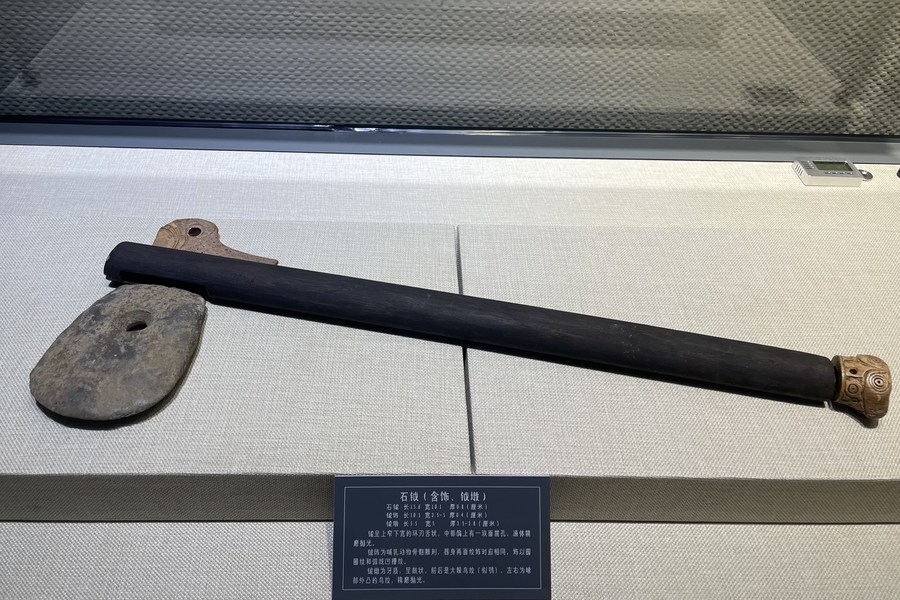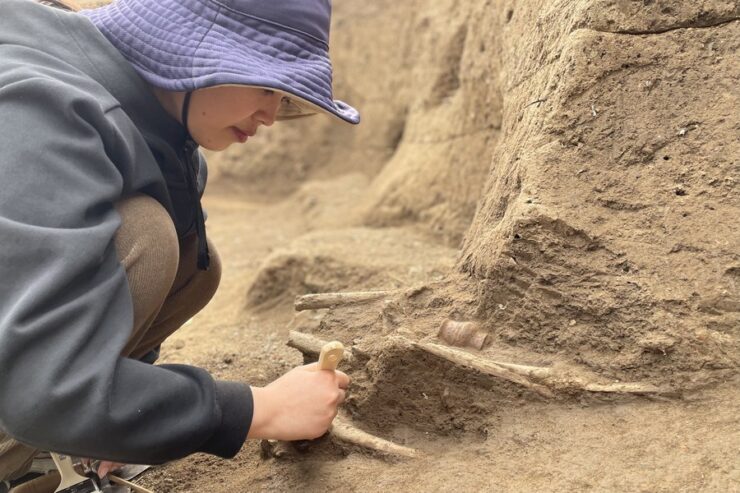Scientists hope the Sanxingcun excavation in the lower reaches of the Yangtze River will shed light on daily life in the Neolithic settlement and the origins of Chinese civilization.
Li Moran, a researcher at the Institute of Archaeology under the Chinese Academy of Social Sciences, told news agency Xinhua that they will unearth ancient sites in Sanxingcun in the coastal province of Jiangsu, including settlement and burial sites in Sanxing village to reveal its complex social structure.
The Sanxingcun site dates back 5,500 to 6,500 years and was first excavated from 1993 to 1998, focusing on burial sites. It sits at a relatively high elevation and is surrounded by rivers. The new project will cover 800 square meters (8,611 square feet) of the site, which totals 350,000 square meters.
Li said “The village covered a big area and had a large population. There are significant differences in the number and quality of burial objects and a clear division between residential, handicraft production and burial zones. This shows that the society was starting to become more complex and was possibly in a transition period from an equal society to an unequal one, the site was key to exploring the origins of Chinese civilization.”
The excavation, expected to be completed by the end of this year, is hoped to provide a better understanding of the settlement pattern and a panoramic reconstruction of people’s lives at the time.
More than 4,000 artifacts and animal bones have been unearthed at the Sanxingcun site. Among the finds are a stone axe decorated to symbolize power and authority and a cup containing the earliest known example of “cloud and thunder” patterns, a common motif in China’s Neolithic art.



Jade objects, stone tools, pottery, bone tools and carbonized rice were also discovered at the site. In addition, more than 1,200 skeletons were unearthed from 1,000 graves, most of them in the southern part of the site.
Archaeologists from the Institute of Vertebrate Palaeontology and Palaeoanthropology of the Chinese Academy of Sciences are analyzing the DNA of the human remains.
In total, about 13,000 artifacts have been unearthed from the Sanxingdui site. The site is considered one of the most important discoveries of the 20th century because it sheds light on a little-known civilization, the Shu kingdom, from about 4,500 years ago.
‘Jinsha’, located in the Qingyang District of Chengdu, the capital of Sichuan Province, is also an archaeological site that sheds light on the Shu kingdom. Sanxingdui and Jinsha are thought to be sites of the Shu culture. (Recent archaeological discoveries point to the existence of a unique civilization in this region before the Qin conquest. The Shu state was conquered by the Qin state on the Qin Mountains to the north in 316 BC.)
